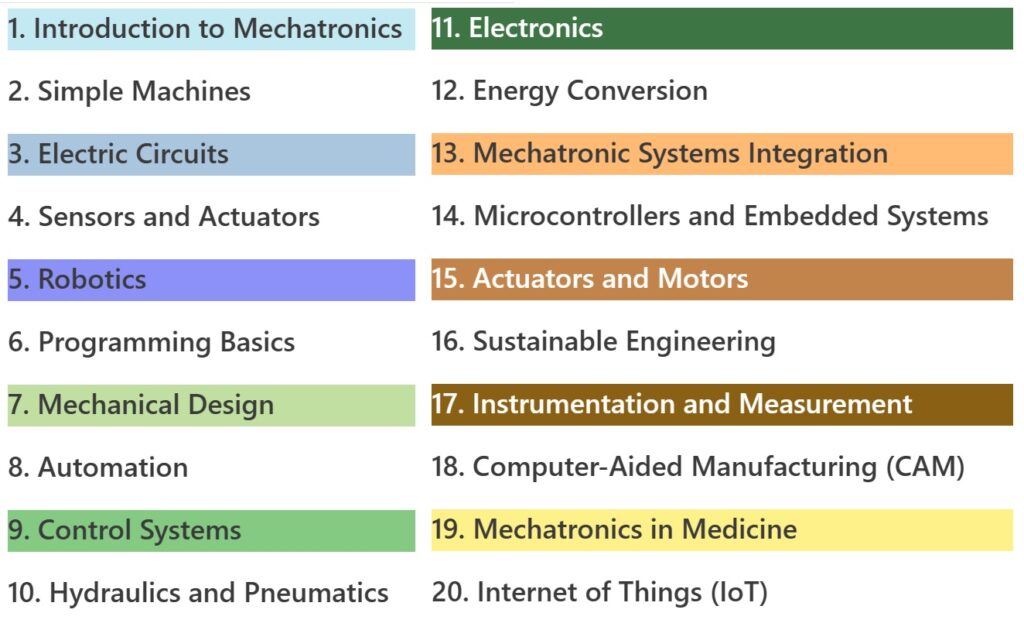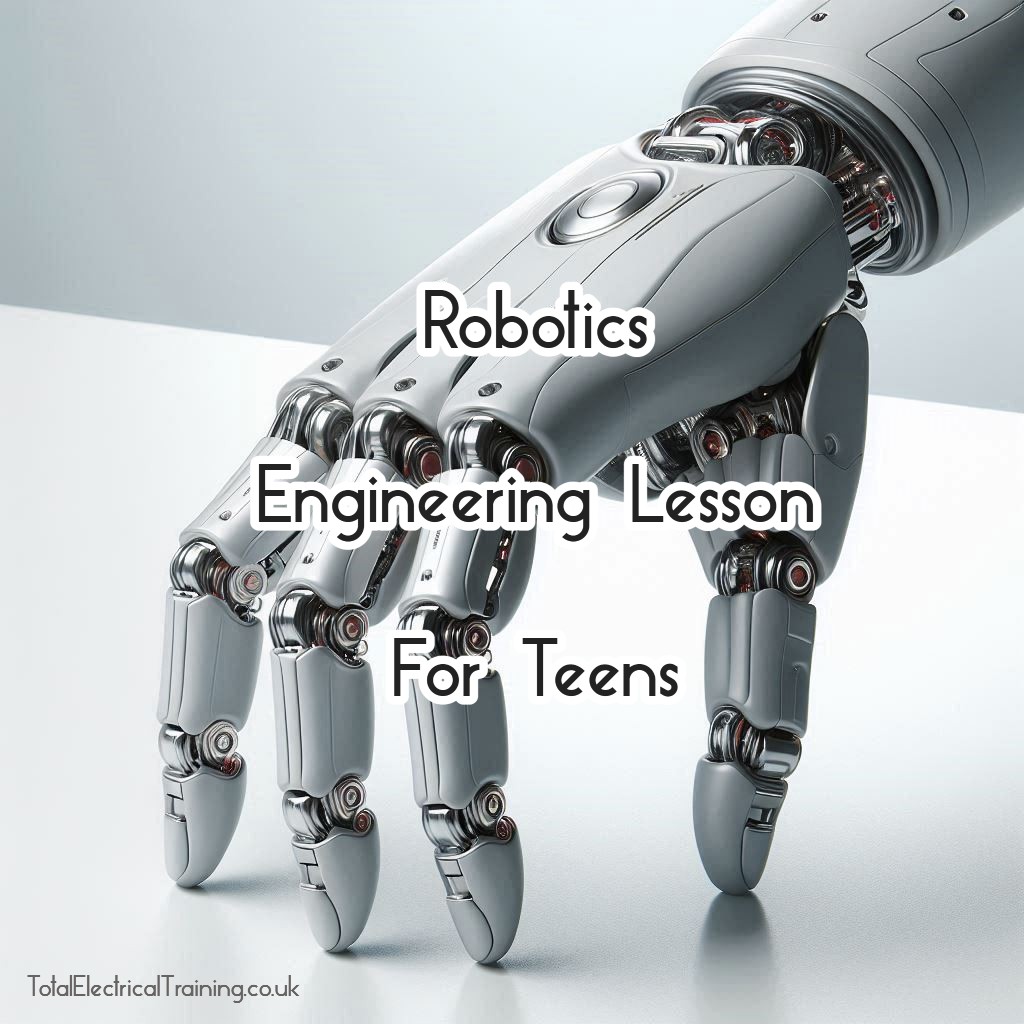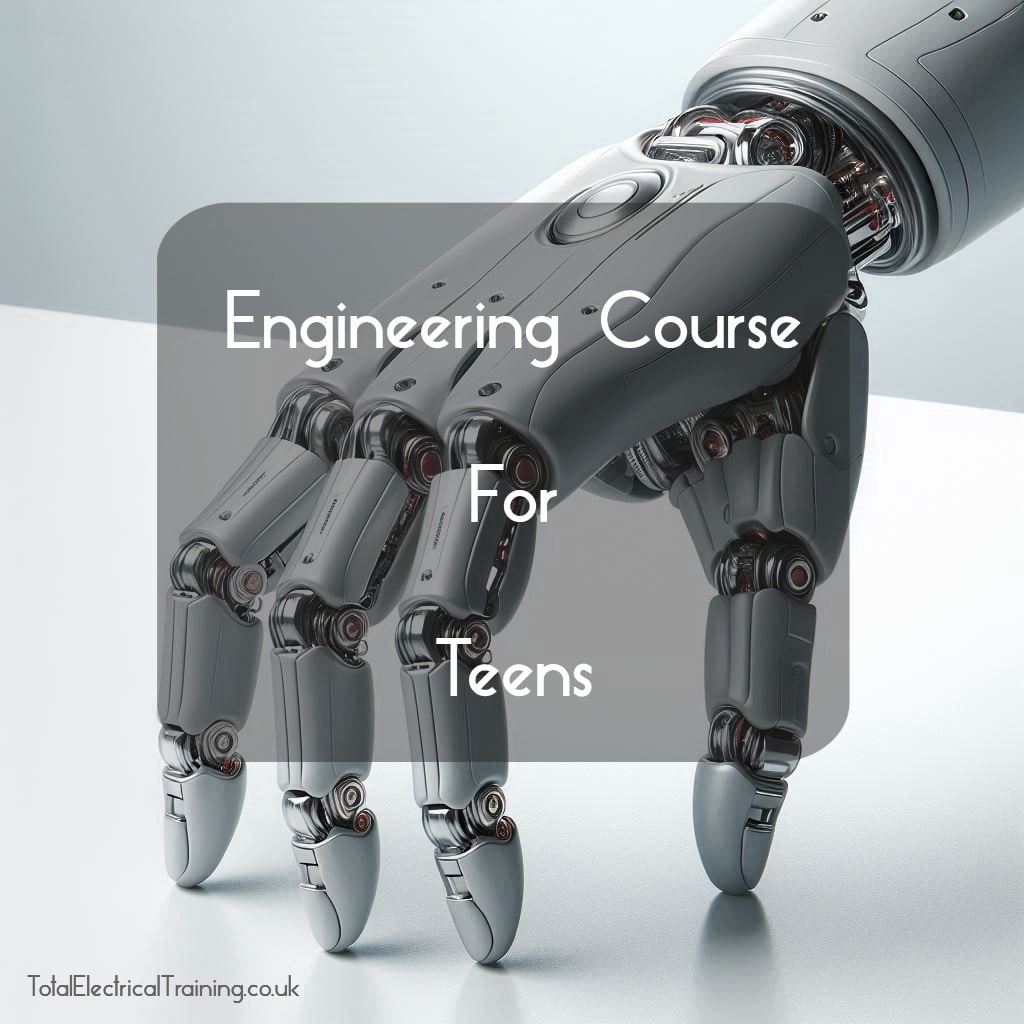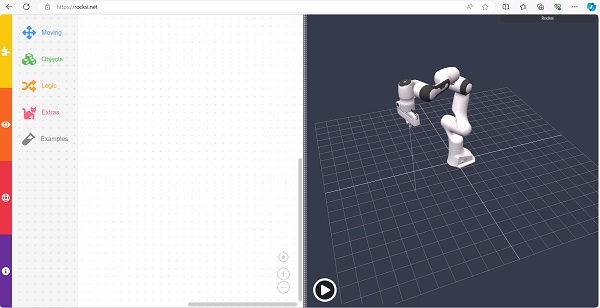Click the simple table below to view the FREE Mechatronics Course for Teens OVERVIEW

This Lessons Contains: READING, VIDEOS, QUESTIONS, and SIMULATION PROJECT.
Exploring Robotics
Robots have become an integral part of our modern world, revolutionizing industries, aiding in scientific exploration, and even serving as companions in our homes. As budding engineers, understanding the basics of robotics opens doors to endless possibilities in innovation and problem-solving. Let’s delve into the fundamentals of robotics and answer some key questions that will lay the groundwork for your journey into this exciting field.
1. What are the basic parts of a robot?
A robot is essentially a machine designed to carry out tasks autonomously or under remote control. While their functionalities can vary widely, most robots consist of several common components:
- Sensors: These are the eyes and ears of a robot, allowing it to perceive its environment. Sensors can include cameras, infrared sensors, ultrasonic sensors, and more, depending on the robot’s purpose.
- Actuators: Actuators are responsible for the robot’s movement or manipulation of its surroundings. Examples include motors, hydraulic cylinders, and pneumatic pistons.
- Controller: The controller serves as the brain of the robot, processing information from sensors and issuing commands to actuators. It can be a microcontroller, a computer, or a combination of both.
- Power source: Robots need energy to operate, typically provided by batteries, fuel cells, or electrical outlets.
- Mechanical structure: This is the physical framework of the robot, providing support for its components and determining its form factor and range of motion.

2. How do robots sense their environment?
Robots employ various sensing technologies to gather data about their surroundings:
- Vision: Cameras capture visual information, allowing robots to recognize objects, navigate environments, and perform tasks with precision.
- Touch: Tactile sensors enable robots to detect and respond to physical contact, facilitating interactions with objects and ensuring safety in collaborative environments.
- Proximity: Sensors such as ultrasonic or infrared sensors detect the presence or proximity of objects, helping robots avoid obstacles and navigate confined spaces.
- Environmental: Sensors can measure parameters like temperature, humidity, and air quality, enabling robots to adapt to different environments and perform specialized tasks.
3. What is the difference between autonomous and remote-controlled robots?
- Autonomous robots: These robots operate independently, relying on their onboard sensors and programming to perceive their environment and make decisions. They execute predefined tasks without continuous human intervention, using algorithms for navigation, obstacle avoidance, and task execution.
- Remote-controlled robots: In contrast, remote-controlled robots are operated by a human operator via a wireless controller or a computer interface. While the operator provides commands in real-time, the robot lacks autonomy and relies entirely on external guidance.

4. How do robots move?
Robots utilize various mechanisms for movement, depending on their design and intended application:
- Wheeled: Wheeled robots move on wheels or tracks, offering speed and efficiency on flat surfaces. They are commonly used in applications such as indoor navigation, logistics, and surveillance.
- Legged: Legged robots emulate the locomotion of animals, using legs or limbs to traverse diverse terrains and overcome obstacles. These robots excel in environments where wheeled counterparts struggle, such as rough terrain or disaster zones.
- Flying: Flying robots, or drones, achieve mobility through aerial propulsion systems such as rotors or wings. They provide aerial surveillance, transportation, and delivery capabilities, with applications ranging from filmmaking to search and rescue operations.
- Swimming: Underwater robots, or underwater autonomous vehicles (UAVs), navigate aquatic environments using propulsion systems like thrusters or fins. They play crucial roles in marine exploration, underwater inspections, and oceanographic research.
In conclusion, robotics is a multifaceted field encompassing mechanical engineering, electrical engineering, computer science, and more. By understanding the basic components of robots, their sensing capabilities, modes of operation, and methods of movement, you’re equipped to embark on a fascinating journey of exploration and innovation in the world of robotics.
Hands on Project for this Lesson
Learn to use this free online robot simulator be sure to go through all the tutorials given on the website. Once you get the hang of it. Make it do a specific task.

Questions
- What are the basic parts of a robot?
- How do robots sense their environment?
- What is the difference between autonomous and remote-controlled robots?
- How do robots move?
- Research Question: Research the latest advancements in robotic technology.
Buy me a Coffee
I would be honoured if you’d buy me a digital coffee to express your thanks for this Mechatronics Course I’ve put together to help eager minds excel in their knowledge, learning and success.
Your kind donation makes it possible for me to continue creating amazing content and fulfil my dream of keeping the majority of what I make FREE and Ad FREE!!!
Thank you from the bottom of my heart, and abundant blessings to you!

Join students and professionals
from across the world increasing their knowledge of Electrical Engineering.
One email at a time
We never send spam or give your information to anyone, Privacy Policy here.



